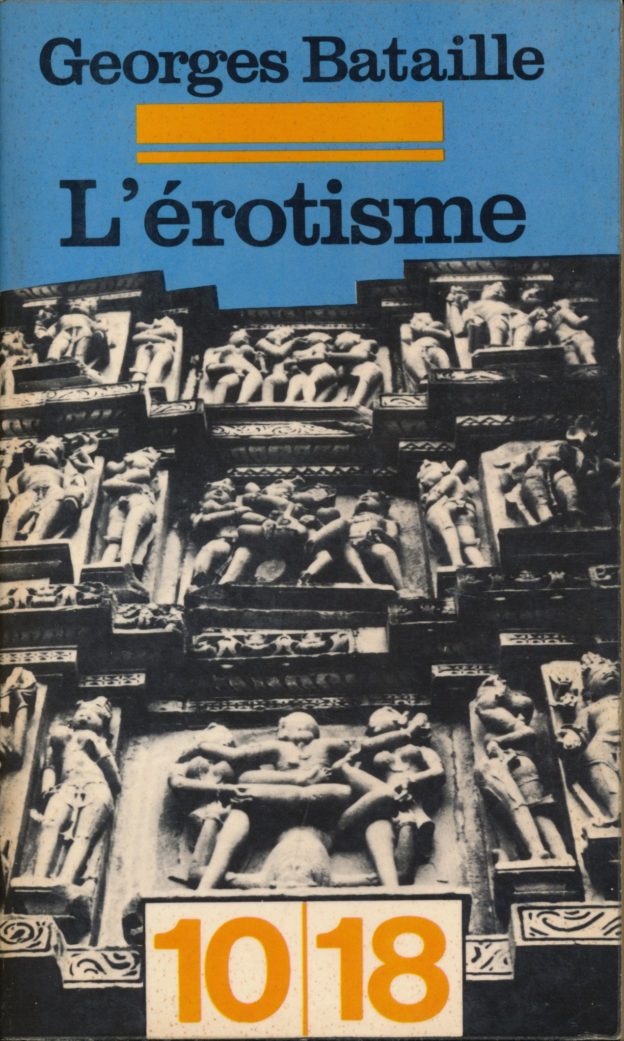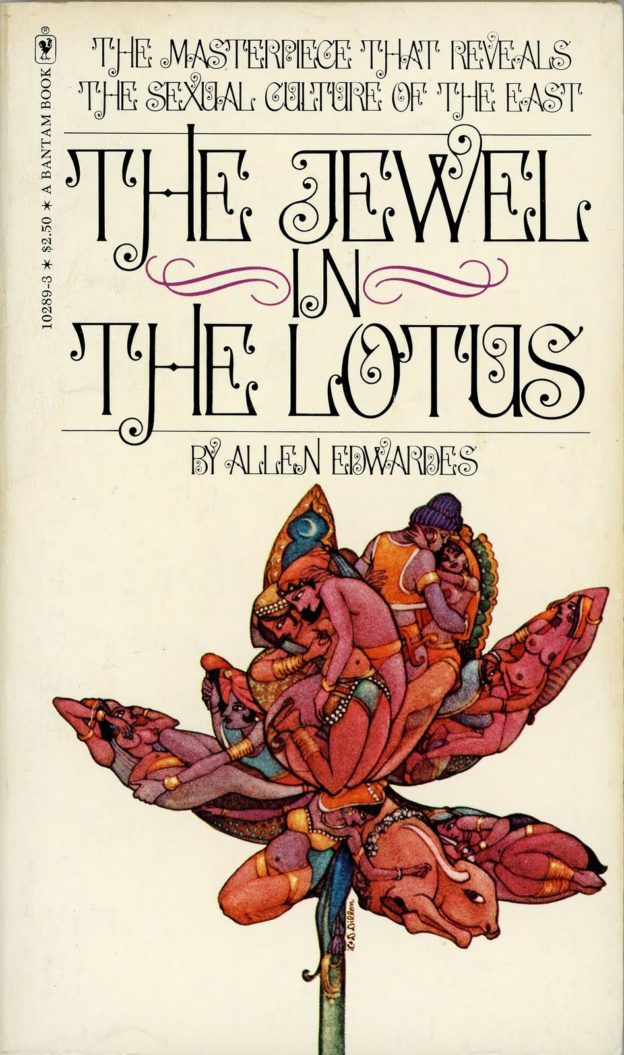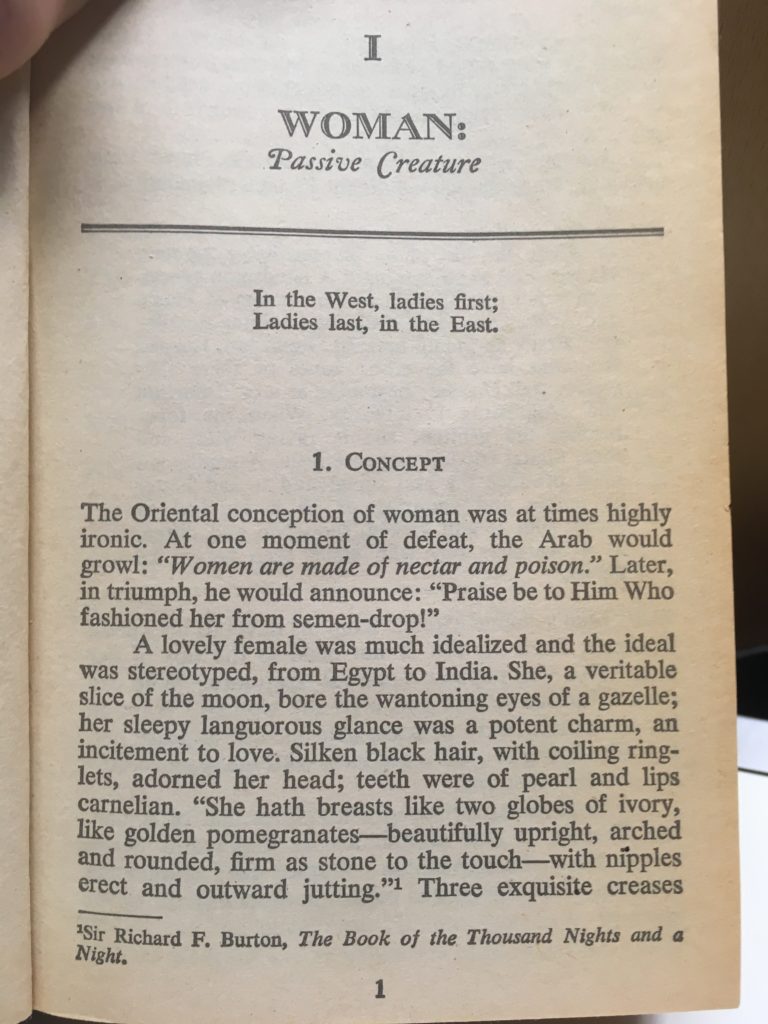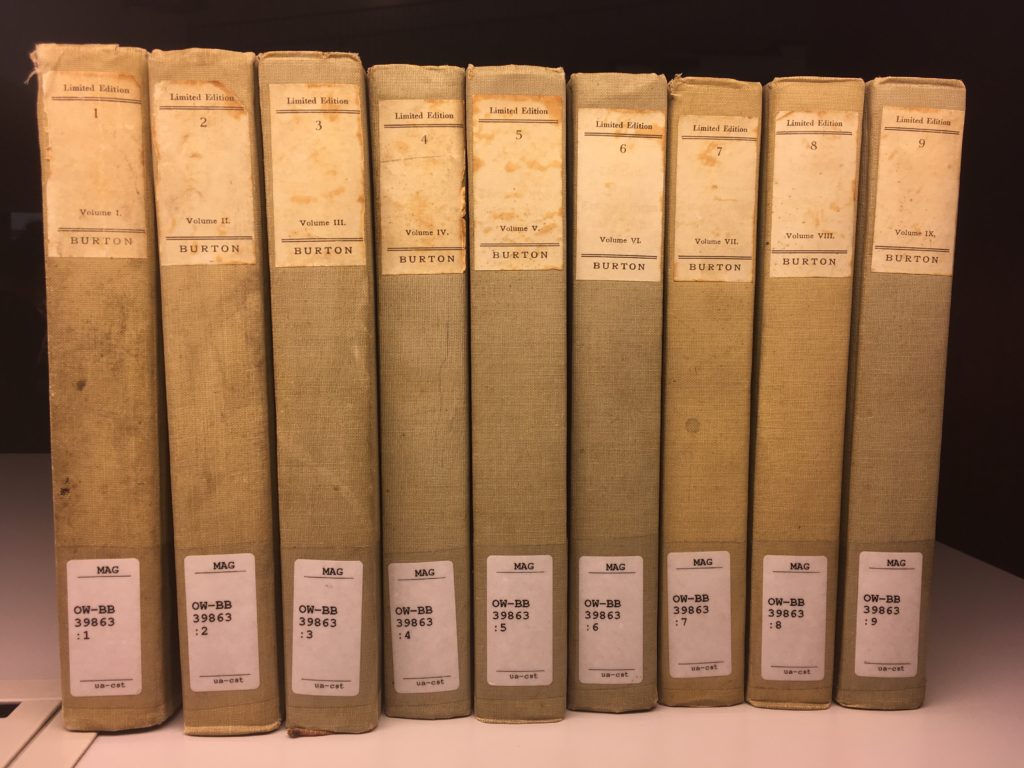This is the picture I referred to when in my previous post[1] I mentioned ‘something’ that kindled my interest in oriental erotica, perhaps for the first time.
It is the cover of the book Eroticism by French writer Georges Bataille as it is depicted in Onfray‘s book Le Souci des plaisirs which I bought during my recent visit to Pau and which I read last Thursday.
Bataille’s cover is illustrated with a photo of an Indian erotica masterpiece: a detail from the Kandariya Mahadeva Temple, part of the Khajuraho Group of Monuments.
When I was writing De geschiedenis van de erotiek I already speculated that the conception and experience of sexuality (and ergo erotica) in the east, cannot be that much different from ours in the west:
“In the West, there is an idea that the art of love in the East is more sophisticated than ours. Whether this is true, cannot be said with certainty. After all, what is sophisticated and how can we look into the bedrooms of countless couples who make love every night in the East? Do they make love like we do or is their business conducted in a more tantric way? Hard to ascertain, difficult to refute.” (Geerinck, 2011)
But Onfray seems to disagree and repeats trite clichés on the exaltedness of Eastern sexuality in ‘Le Souci des plaisirs’.
Onfray is right about one thing: the photo of the highly sexual Khajuraho Group of Monuments is totally out of place on the cover of Bataille’s book in the sense that Bataille’s Erotisicism is exclusively about western eroticism.
Bataille owes this to himself.
He should not have written:
“Numerous Indian temples solemnly remind us of the obscenity buried deep in our hearts.”
In the section “Les leçons de la couverture” (The lessons on book covers, pages 118-19) of ‘Le souci des plaisrs’, Onfray comments on this 10/18 edition of George Bataille’s L’Erotisme The subscript to the photo of the cover reads “Dieux et déesses hindous, couples mithunas et apsaras, temple de Kandarya construit sous Vidyadhara (1017-1029), Khajuraho, Madhya Prasesh, Inde.”
Onfray, surprised about the cover, asks rhetorically.
Obscenity? Really? Where?
He answers that obscenity seems to be a Western thing when he says that as far as the affirmation is concerned “that at the bottom of our hearts there is buried obscenity,” this probably holds true for Bataille and Sade and other “nihilists of the flesh”, but certainly not for the contemporary Indians of Khajuraho…” (“Sûrement pas pour les Indiens contemporains de Khajuraho…”)
So I wonder, is obscenity really a purely occidental thing, just as perversion? Is it a coincidence that sadism and masochism are two perversions of sexual love that first came to fruition in the west?
And what about Japan, notorious for its kinkiness?
Is Japan the exception that proves the rule?
Because if sadomasochism is typically Western, why is it to be found elevated to perfection in Japan, a country largely devoid of Christian influence?
Japan is usually regarded as part of the West, ever since its Samsung- and Sony-ization.
So is sexual perversion the dividing line in the East–West dichotomy?
Questions.




